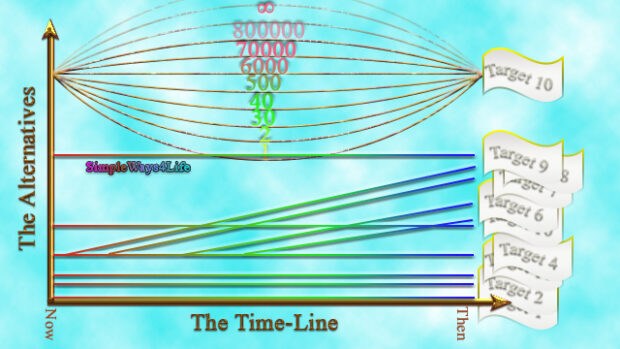Individuals productivity is sensitive to the targets behind this measurement and the normalization of the measurement bases. The individual productivity is a vital tool for the manager or supervisor to understand the potentiality of his team. Why? And, how to boost the productivity potential?
We shall start by listing the top ten (10) things to prepare for your team so they have the grounds set to boost their productivity.
How to elevate Individuals productivity?
- Give them clear procedure and steps for doing the job
- Set them clear requested outputs
- Clear schedules for when to do the jobs, are vital
- Who is responsible for the Coordination activities?
- Their safety and health are well taken care for
- Rest time and breaks are well scheduled and respected as the time for work
- Their time is respected. No needless meetings or time wasting activities
- Their ideas are heard and respected. Clear channels to submit their feedback are available. Valid proposals find their ways to application.
- They have equal chances to training, upgrade and being promoted
- Clear rules are available for career promotions. Clear rules for punishment are also available.
Why the Individuals Productivity is important?
Firstly, there is one fixed universal norm: “Everything is constantly changing”. If as a manager or a supervisor, you didn’t prepare enough understanding of the potential of each individual team member, any change will storm you. So, changes might not occur daily in the work place. But, on the span of a few years surely you will face an expansion or a shrink in the size of business. The demography of the work force or their ideologies will change. The technology might be outdated or a more efficient technology will be adopted by the competitors. Beside those long term changes, some sudden requests pop up. Example: The sales team is negotiating a deal for a modified product or a promotion that needs a change in the production process.
I had seen this with Unilever promotions packaging. Monthly or bi-monthly, the maintenance/projects team assembles a portable packaging line in one of the storage for a new campaign. In another company, we send the maintenance team to assemble grapes on top of the governmental jetty cranes to unload our special shipments. Who will go? Why? What are the working conditions? If there is no prior scan of the capabilities and productivity of the individual team members , it would be difficult to properly select the best players for this new job.
Productivity in routine and regular tasks
On the other hand, I had seen the working platform of massive garment production facilities in some trade free-zones. The shift productivity is the sum of the individuals productivity. Keeping in mind that those are humans, their production rates goes up and down for various reasons. Some of those reasons are work related while others are not. The level of professionality that isolates the personal issues from the work time is hard to reach except at higher level of production workforce. But, still in some respectful places there is a supervisory staff responsible for following the individual productivity per unit time. This staff try to solve the personal issues that are work related to boost the individual productivity.
At any work level, there are routine tasks and non routine tasks. The distribution of the daily working hours between routine and non routine tasks vary. Higher managerial levels are not an exception, there are daily meetings and daily review of production and sales results. At higher supervisory or managerial level or even when running your own business, you need the self control and monitoring of your own productivity levels. To monitor our own productivity levels we need some indicators or measures. Those measures tells us if we were productive in this day, week or month. Above all, those measures need to be clear enough and easy to measure. This way we can have a clear indication of improving or declining productivity. First we comprehend the idea and the tools needed to control our own productivity. Then we can measure and recommend improvements for our team’s productivity.
Labor Productivity i.e. Individual Team Members productivity
Now, to measure you team members productivity, you need to measure definite inputs and outputs. The easy part would be the the input; mostly it will be the working hours of this individual. For example, a machine operator works for 40hrs per week. If he produces 80pcs per week that’s a productivity of 2pcs per hour. The worked hours need to be the actual ones, excluding the vacations and other unproductive time. On the other hand, how to treat the the lack or delay of material or the need for maintenance . Shall we deduct it from the time available or shall we consider it within the productive time.
There is no one correct solution for the calculation. But, there should be a standardized and clear bases for the calculation. That’s what really gives the value and credibility to the calculation. Most importantly, to compare the results and conclude helpful indications, measure the productivity of all the team members using the same scale with clear adjustment factors that are acceptable to all.
What affects the individuals productivity?
There are external factors that boost or distract the individuals from their productive work. Not all the boosting or distracting factors are work related. Frankly, if the management level managed to exploit the work related boosting factors and to minimize the distracting factors, that will be enough. Chasing the causes of declined productivity outside the workplace is an endless hustle. The top ten workspace settings mentioned at the beginning of this chat are vital to boost the productivity.
The first step is to create clear outputs and inputs to measure and calibrate the performance against them.
Any productivity scholar, research or paper considers the labor productivity as a key indicator. It is the prime mover for the economic growth on national scale as well as for companies.
RBA or Reserve bank of Australia has a great definition for labor productivity. ” Labor productivity is defined as output per worker or per hour worked. Factors that can affect labor productivity include workers’
skills, technological change, management practices and changes in other inputs (such as capital).”
In conclusion,
We had clarified the importance of individuals productivity and the ground rules to create solid calculation for it. At the top of this chat we presented the top ten (10) things to prepare in the workplace to boost your team productivity. Increased productivity elevates economic returns for the business and increases the self-esteem of your team members.
If you feel you need help with any of these ideas we discussed, request a Management Consultancy or Coaching Services From our Store









2 Comments